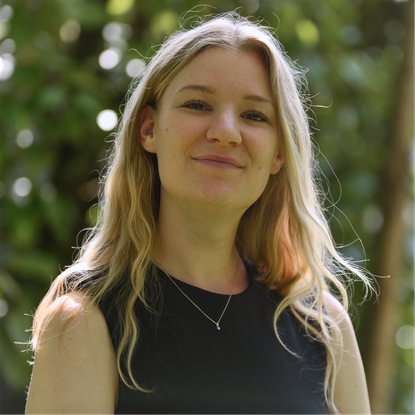This article was originally published in the Dutch journal Stadswerk.
Luckily, the necessity to renovate also presents opportunities to link quay wall maintenance to broader urban transitions and themes such as sustainability, climate adaptation, and biodiversity.
This is the starting point of the ‘Multifunctional Quay Walls’ project, which is part of the Future-Proof Living Environment program and funded by the National Growth Fund. The project focuses on innovative and scalable solutions that enhance the sustainability of quay walls and contribute to a more livable city.
Opportunities in necessary renovation
Mandy Brussaard, project manager for Multifunctional Quay Walls at AMS Institute, explains:
‘Amsterdam faces urgent challenges such as the energy transition, infrastructure modernisation, and urban greening. Quay walls can play a crucial role in these transitions. Where maintenance and renovation were once seen as purely technical, the Multifunctional Quay Walls project demonstrates how these activities can contribute to a future-proof city. Imagine quay walls that are strong and durable but also accommodate greenery, aquathermal energy, and circularity.’
‘The project takes a multidisciplinary approach to developing and testing solutions. By collaborating with various stakeholders and disciplines—from construction and hydrology to ecology and cultural heritage—designs emerge that address a wide range of urban challenges.’
Quay wall renovation in Amsterdam
Research through Design as a driver of innovation
One of the methods used in the project is ‘Research Through Design’ (RTD), an iterative process in which designs are developed, tested, and refined until they meet multiple requirements and criteria. In traditional methods, research and design often occur separately: design is based on completed research, or existing designs are studied. In RTD, research and design are done simultaneously and are carried out by the same people.
A key aspect of this method is multidisciplinary design workshops where designers, researchers, and industry experts co-create solutions and assess their feasibility and impact. The first workshop, held in December, focused on maximum multifunctionality. Participants developed and tested innovative ideas such as energy generation in the canal, floating recreational platforms, and quay walls with sloped embankments. These workshops allow designs to be tested in real time with direct input from experts across different disciplines. The ideas from this initial workshop are now being refined and integrated into the design process, after which the group will reconvene to optimise the designs further.
Bas Kramer, a landscape and urban designer pursuing a Doctorate in Engineering at Wageningen University & Research, is involved in the Multifunctional Quay Walls project. ‘RTD allows us to systematically develop design ideas and align them with urban ambitions. By working iteratively, we can create solutions that are not only technically feasible but also add value in terms of biodiversity and livability.’
Researchers during the design workshop in December.
From prototypes to practice: Living Labs
‘A crucial step in scaling up these prototypes is the Living Lab approach,’ says Rohan Daniel, also a Doctorate in Engineering candidate at Wageningen University & Research. ‘In these ‘real-life test environments,’ designs can be implemented and refined. The city of Amsterdam serves as a testing ground, meaning that starting in 2027, an actual prototype of a multifunctional quay wall will be built in the city, allowing various stakeholders to optimise the design’s functionality and impact.’
‘This Living Lab process not only ensures safe and robust innovations but also fosters support among policymakers and other stakeholders. The Living Lab approach is essential for seamlessly integrating prototypes into the urban environment and testing them further.’
Lessons for Other Cities
Although the project focuses on Amsterdam, it provides valuable insights for other cities in the Netherlands and beyond. The integrated approach and emphasis on multi-value creation can be applied to a wide range of urban infrastructure projects, not just quay walls but also bridges, dikes, and city parks. Combining technical innovations with urban ambitions requires a long-term vision and close collaboration between governments, knowledge institutions, and private parties.
The canal of the future
Brussaard: ‘The Multifunctional Quay Walls project demonstrates how an urgent challenge, quay wall replacement, can be transformed into an opportunity to make cities more future-proof. By integrating technical, ecological, and social considerations, we develop solutions that improve infrastructure and contribute to a livable, sustainable, and resilient city. This project highlights the importance of collaboration, creativity, and a long-term vision in tackling urban challenges.’
